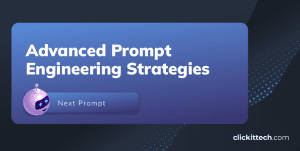Ever feel like your team is struggling to stay on top of projects, with deadlines slipping and priorities shifting? It’s a common challenge, but there’s a way to bring order to the chaos; understanding the agile vs scrum differences. Stay tuned, and let’s find out!
Some of the concepts we discuss can be quite complex, so feel free to contact me for assistance.
Agile vs Scrum Difference
Now, let’s discuss the main difference between Agile and Scrum. Agile is a development methodology based on an iterative and incremental approach, while Scrum is an implementation of the agile methodology in which incremental builds are delivered to the customer every two to three weeks. Let me explain it to you in a much simpler manner.
Imagine you’re planning a road trip. Agile is like deciding to explore a new country, while Scrum plans each day’s journey with detailed stops and activities. Both Agile and Scrum help you reach your goals. Think of Agile as the overall mindset or approach, while Scrum is a specific method or framework to put that mindset into action.
What is Agile?
Agile is an approach that focuses on iterative development, teamwork, and adaptability. It prioritizes people and communication, delivering functional software, collaborating with customers, and being responsive to change.
Methodologies
Agile includes several methodologies, each with its own approach. Some of them are Scrum, Kanban, Lean, and Extreme Programming.
- Scrum focuses on dividing work into manageable sprints. This allows teams to provide increments of work regularly.
- Kanban improves visualizing tasks on a board to track progress and identify bottlenecks.
- The aim of using Lean is to reduce waste and improve efficiency by simplifying the processes available.
- Extreme Programming improves software quality through practices like pair programming and continuous integration.
Each methodology provides different tools and practices to help teams work efficiently and adapt to change.
Benefits
Now let’s see the benefits of using Agile and why we should use it.
- Agile makes creating your project very flexible. You can make changes at any stage of the project.
- Here, the customers will always be satisfied because of the continuous software delivery.
- Also, regular testing and feedback will ensure high-quality outputs.
- Last but not least, using Agile will increase team collaboration. This is because it improves teamwork and communication.
What is Scrum?
Scrum is a specific Agile methodology used for managing complex software and product development. It structures the development process into small, manageable chunks called Sprints, typically lasting 2-4 weeks.
How Does It Work?
First, there’s Sprint Planning. Here, the team gets together and discusses what needs to be done in the upcoming sprint. Afterward, they will divide the work among the members of the team. Then, every day, they have a Daily Standup, which is a quick meeting to discuss progress and to notify others of obstacles they’re facing.
At the end of the sprint, they have a Sprint Review to review what’s been completed. Finally, there’s the Sprint Retrospective, where the team looks back on how the sprint went and talks about how they can improve their processes for next time.
Roles in Scrum and Their Responsibilities
Now, let me teach you about the roles and responsibilities of the people in the scrum methodology.
- First, there’s the Product Owner. This person defines the product vision, manages the product backlog, and ensures the team delivers value to the business.
- Now, I will talk about the main person in a scrum, the Scrum Master. The scrum master is like the team’s guide through the Scrum journey. He/she helps clear out any roadblocks, makes sure everyone follows Scrum practices, and generally keeps things moving forward smoothly.
- Finally, there’s the development team. It collaborates on product updates and aims to deliver something ready for use by the end of each sprint.
Are you considering using Agile or Scrum? ClickiT offers expert teams for both, guaranteeing task optimization and improved collaboration. Discover our customized solutions for your project management needs today.
And don’t forget to check out our video on the key differences between a Product Manager and a Product Owner. Click the link right here to watch it now.
Agile vs Scrum Differences
Now, I’m sure that you have gained a good understanding of both Agile and Scrum. Let me quickly jot down the differences between the two.
Focus
Agile and Scrum focus on different things. Agile focuses on continuous improvement and flexibility, while Scrum focuses on delivering a functional product increment within a set timeframe.
Flexibility and Adaptability
Agile allows for a Highly flexible project where changes can be made at any point in the project.
Scrum, however, provides a structure with fixed-length sprints and predefined roles.
Ceremonies
Next, I will compare ceremonies. As I’ve mentioned earlier, there are quite a few scrum ceremonies like Sprint Planning, Daily Standup, Sprint Review, and Sprint Retrospective.
However, in Agile, there are no hard and fast ceremonies, and the availability of such ceremonies may depend on which Agile methodology is being used.
Roles and Responsibilities
In every project, the team members will have roles and responsibilities. However, the manner in which they are assigned may differ from Agile to Scrum.
In Agile, roles vary based on the chosen methodology, while in Scrum, there are predefined roles such as Product Owner, Scrum Master, and Development Team.
Conclusion
Agile is a broad methodology that focuses on flexibility and continuous improvement, while Scrum is a specific implementation of Agile with defined roles and ceremonies. Understanding the differences between Agile and Scrum can help you choose the right framework for your team and projects.
Both methodologies improve productivity, increase quality, and provide customer satisfaction in the projects they are used in.










